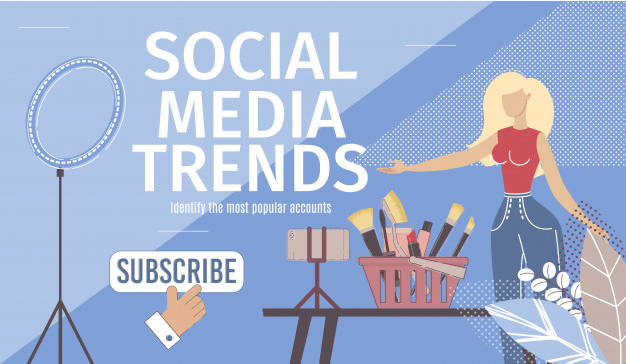blog
Social Media: Current Trends and Marketing Opportunities

Social media is a constantly evolving and expanding landscape. It can be hard to keep track of and even harder to manage accounts on every platform. Each social media site has its own culture; learning how to integrate and while building an understanding of the offerings available to brands is no straightforward task. Unless you can staff a social media team, it's best not to spread your business too thin.
Instead, like other marketing efforts, dedicate time to the place where your audience spends its time. Just as someone watching ESPN is more likely to buy Nike than someone watching HGTV, Facebook might be more aligned with your target audience than Snapchat.
Recently, eMarketer released its Q3 social media report and Sprout Social announced updated demographics, so here are the current audiences and marketing capabilities of the top social media platforms.
Audience
Facebook's penetration into the US market is unparalleled, making the platform a safe bet for reaching your consumer base. 74% of its users log in daily, more than any other site. That said, the platform skews female. Roughly 80% of all US adults between the ages of 18 to 49 have a Facebook account they check daily.
Marketing Options
While still being tested, Facebook announced branded ecommerce shops within the platform this summer. The site also now allows companies to host paid virtual events. All in all, Facebook continues to provide numerous ways for consumers to buy products and experiences from brands, in addition to an extensive audience creation system for targeted ads. Facebook Pages also have a history of strong search presence, and automated chat Messenger bots have shown to help address consumer concerns and questions.
Audience
Instagram's popularity is still increasing, which makes it an excellent platform to connect with young, affluent consumers. While the second most popular social media channel with teens, it has the greatest penetration in the 18-24 group (75%). Compared to Facebook's even class penetration, the more educated a person is, and the higher their income, the more likely they are to use Instagram.
Marketing Options
Similar to Facebook, as Instagram is owned by Facebook, Instagram gave brands the ability to build an ecommerce shop. Specific for Instagram, however, is the ability to complete a transaction without leaving the app, reducing sales friction. And while the feature is still being tested for Facebook, business Instagram accounts can now sell products during livestreams. Instagram as a platform keeps expanding its ability to meet ecommerce needs, making the platform a good place for companies looking to sell products to young adults.
Audience
Of the big three platforms, Twitter has the least penetration into the adult market (22%) because of its culture of news and news commentary. However, the site also serves as a customer service platform, making Twitter a good place to connect with consumers and share brand messaging. Like Instagram, Twitter skews towards those with degrees and incomes higher than $75K, but with a smaller audience. Its user base is 66% men, unusual amongst the platforms.
Marketer Options
Unlike other social media platforms that adjusted their ad offerings in light of Covid19, Twitter has focused on ensuring content quality. Twitter ads have historically struggled to perform at Facebook's level, but the platform is where many consumers go to air grievances. A company account for the sake of consumer service is something many brands should consider and monitor. Twitter is also a good channel for PR efforts; tweets and company interactions frequently aid notoriety elsewhere.
Audience
Like Instagram, Pinterest is popular with women. However, the platform appeals to an older demographic. Instagram is most popular with teens; Pinterest's top age group penetration is 18 to 49. It also skews more heavily into college-educated, high-income users. This makes it an excellent platform to advertise to the adult middle-class American woman.
Marketer Options
Pinterest is slowly developing its advertising offerings. While paid posts are something companies can purchase, the site's culture is that of a visual search engine. Thus, while its audience overlaps with Instagram, Pinterest serves better to drive awareness and consideration. It's highly successful at driving website traffic.
Snapchat
Audience
Snapchat is the teen social media site, with 67% of teens aged 13-17 checking their accounts daily. This contributes to the fact that unlike other social media apps, as income levels drop the higher the chance a user has the app. Snapchat is also unique in that both genders are equally as likely to use the app.
Marketer Options
Snapchat doesn't have a userbase with a sizeable amount of disposable cash, but it continues to push the boundaries of advertising technology. It allows AR ads, dynamic ads, and is helping brands with business goals other than ecommerce – app installs, hiring, or other actions on a company's website. For business awareness needs, Snapchat has fun, engaging options.
Each social media platform has a distinctive offering – in both how to market to its audience and who that audience is. A presence on the site, paid or organic, needs to be carefully crafted to fit that platform's culture. How you display your company on Facebook should differ from its Twitter profile – if your company even needs both. Knowing your options is just the start. The next step is communicating with potential customers the way they expect to be addressed.
Avatar New York Web Design is an award-winning, web design and development company specializing in website design, custom development, digital marketing, and managed web hosting.